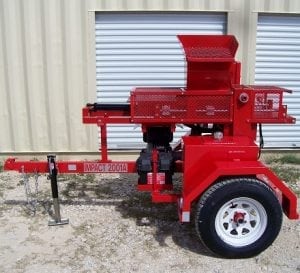
Agriculture
February 26, 2024
AECT Impact 2001A Compressed Earth Block Machine
Read SolutionImplemented by
Advanced Earthen Construction Technologies (AECT)
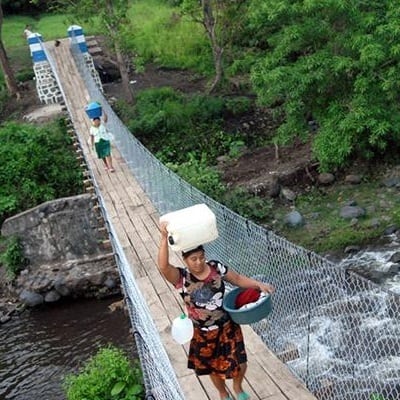
Updated on June 22, 2024
·Created on August 27, 2015
Suspension Footbridges provide safe connections over impassable rivers which makes employment, education and healthcare more accessible.
Bridges to Prosperity (B2P) Suspension Footbridges are customized footbridges developed using local knowledge and materials to be locally appropriate and as cost effective as possible. B2P aims to provide isolated communities with access to necessary places over impassable rivers. These bridges provide rural areas with access to employment opportunities, education and healthcare.
Target SDGs
SDG 1: No Poverty
SDG 11: Sustainable Cities and Communities
Target Users (Target Impact Group)
Community
Distributors / Implementing Organizations
Bridges to Prosperity with the help of numerous universities, foundation partners and corporate partners.
Regions
Africa, Central America, South America, Southeast Asia
Countries
Bolivia, El Salvador, Ethiopia, Guatemala, Honduras, Liberia, Malawi, Mali, Nicaragua, Panama, Peru, Rwanda, Sudan, Uganda, Zambia
Manufacturing/Building Method
B2P collaborates with local partners and communities to develop alternatives for many bridge components. Industry partners and Universities then provide the expertise and resources and professional volunteers from around the world inspect the footbridge and provide support. This way, the bridges sustain time, weather and heavy use.
Intellectural Property Type
Open-source
User Provision Model
Communities in need as well and universities and potential partners are urged to contact a local partner or Bridges to Prosperity directly if they feel there is a need for a bridge in their community.
Distributions to Date Status
350+
Expected lifespan (years)
Permanent structure
Maximum span (m)
84 (suspension bridges)-120 (suspended bridges)
Maxiumum load (kg)
Varies.
Design Specifications
Varies bridge by bridge depending on the locals' needs and setting. B2P provides an open-source, technical manual about building locally viable, efficient footbridges in rural areas under a variety of topographic and community conditions. The following considerations are sourced from the manual and influence bridge design:
Technical Support
Monitoring and maintenance is provided by local communities that are trained by Bridges to Prosperity. B2P provide communities with the knowledge and tools to evaluate the basics of bridge maintenance. Following project completion, the community and local government are responsible for monitoring their footbridge and performing basic upkeep. Communities are trained and responsible for replacing deck panels and recognizing when additional support may be necessary.
B2P leverages professionals to conduct technical inspections and provide support for upkeep as needed.
Replacement Components
Bridges are constructed using local materials to ensure that replacement components can be locally sourced by bridge committees. The use of local resources allows for bridge upkeep by the community.
Lifecycle
No Bridges to Prosperity bridge has failed yet in use. No warranty is issued, as the local communities become the proprietors and are heavily involved in the building and maintenance of the bridge. Interview with representative
Manufacturer Specified Performance Parameters
A safe and effective bridge suited to local conditions. B2P bridges are also designed for a rapid, efficient construction schedule which can be as quick as eight weeks with community participation.
Vetted Performance Status
Bridge design and construction follows standard practices and is guided and reviewed by professional, certified engineers. No Bridges to Prosperity bridge has failed yet in use.
Safety
Bridge construction and standards are outlined in B2P's technical manual.
Complementary Technical Systems
None
Academic Research and References
Obe, Mark Shucksmith, 2003, Social Exclusion in Rural Areas: A Review of Recent Research, University of Aberdeen
Strasky, J., 2005, Stress ribbon and cable-supported pedestrian bridges, Thomas Telford Publishing, London
Lebo, J., Schelling, D., 2002, Design and Appraisal of Rural Transport Infrastructure: Ensuring Basic Access for Rural Communities, World Bank Technical Paper No. 496
Compliance with regulations
Bridges to Prosperity has its own certification process that people can pursue through the organization and its partners.
Evaluation methods
Technical inspections, community monitoring reports and remote sensing technology have been deployed by B2P and its partners to evaluate bridge functionality and use.
Other Information
Here is Bridges to Prosperity’s FAQ page.

Agriculture
February 26, 2024
Implemented by
Advanced Earthen Construction Technologies (AECT)
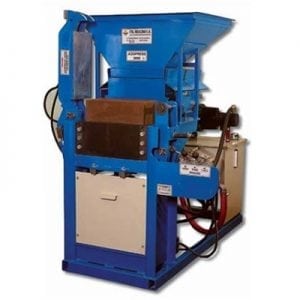
Agriculture
February 23, 2024
Implemented by
Ital Mexicana
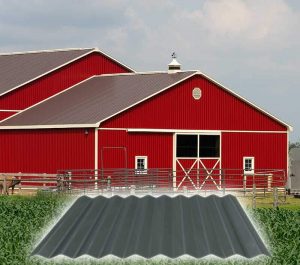
Agriculture
February 28, 2024
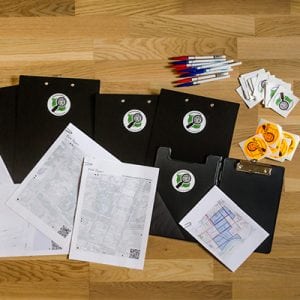
Agriculture
June 5, 2024
Implemented by
Stamen Design
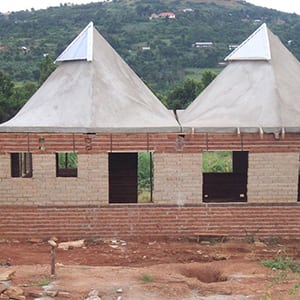
Agriculture
March 1, 2024
Implemented by
George Nez and Albert Knott
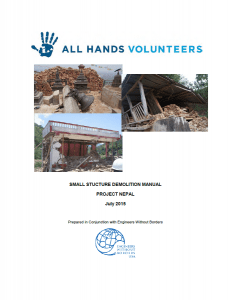
Agriculture
February 23, 2024
Implemented by
All Hands Volunteers (All Hands and Hearts)

Agriculture
February 23, 2024
Implemented by
Bridges to Prosperity
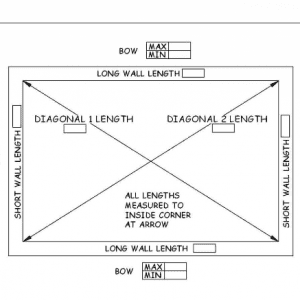
Agriculture
February 23, 2024
Implemented by
Habitat for Humanity

Agriculture
May 24, 2024
Implemented by
Abalobi

Agriculture
August 4, 2024
Implemented by
Hatch International
Have thoughts on how we can improve?
Give Us Feedback